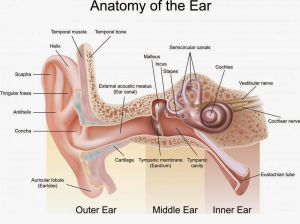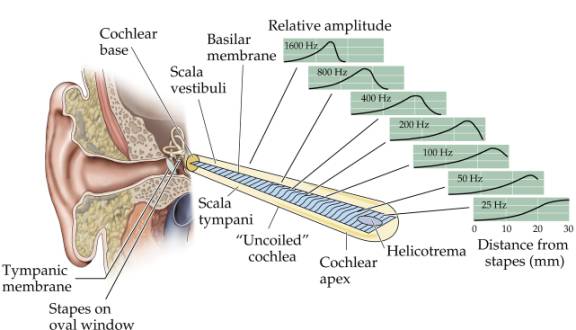When we are born we are capable of hearing pitches that range from approximately 20 Hz to 20,000 Hz, but as we get older we loose our ability to hear all of these sounds. Check out this website to see how many pitch sounds you can hear. You might have to adjust the volume up and down as the sounds increase in pitch.
When you were listening to these sounds they were being processed through three sections of the ear, the outer ear, the middle ear, and the inner ear and each section has a specific purpose. The outer ear is composed of the pinna (nooks and crannies on the side of your head made up of skin and cartilage) and the ear canal as you can see below. Attached to the ear drum (tympanic membrane) is the malleus (hammer), or one of the smallest bones in the body. The malleus, along with two other bones in the body, the incus (anvil), and stapes (stirrup) make up the ossicular chain. The ear drum and the ossicular chain are part of the air-filled middle ear space. The final section of the ear, the inner ear, contains the cochlea, our organ of hearing. The cochlea is filled with fluid which moves tiny “hair cells” that send electrical signals to the auditory nerve and the brain. The hair cells in the cochlea sit on the basilar membrane which is surrounded by fluid.
The basilar membrane is a curled structure that mimics the curvature of the cochlea. At the entrance of the cochlea, the base, the basilar membrane is thick and stiff. Towards the tip (apex) of the basilar membrane it becomes thinner and more flexible. High pitched sounds are represented at the base of the structure, mid-pitched sounds are represented in the middle of the basilar membrane, and low-pitched sounds are represented at the apex. The image below shows an uncurled basilar membrane.

